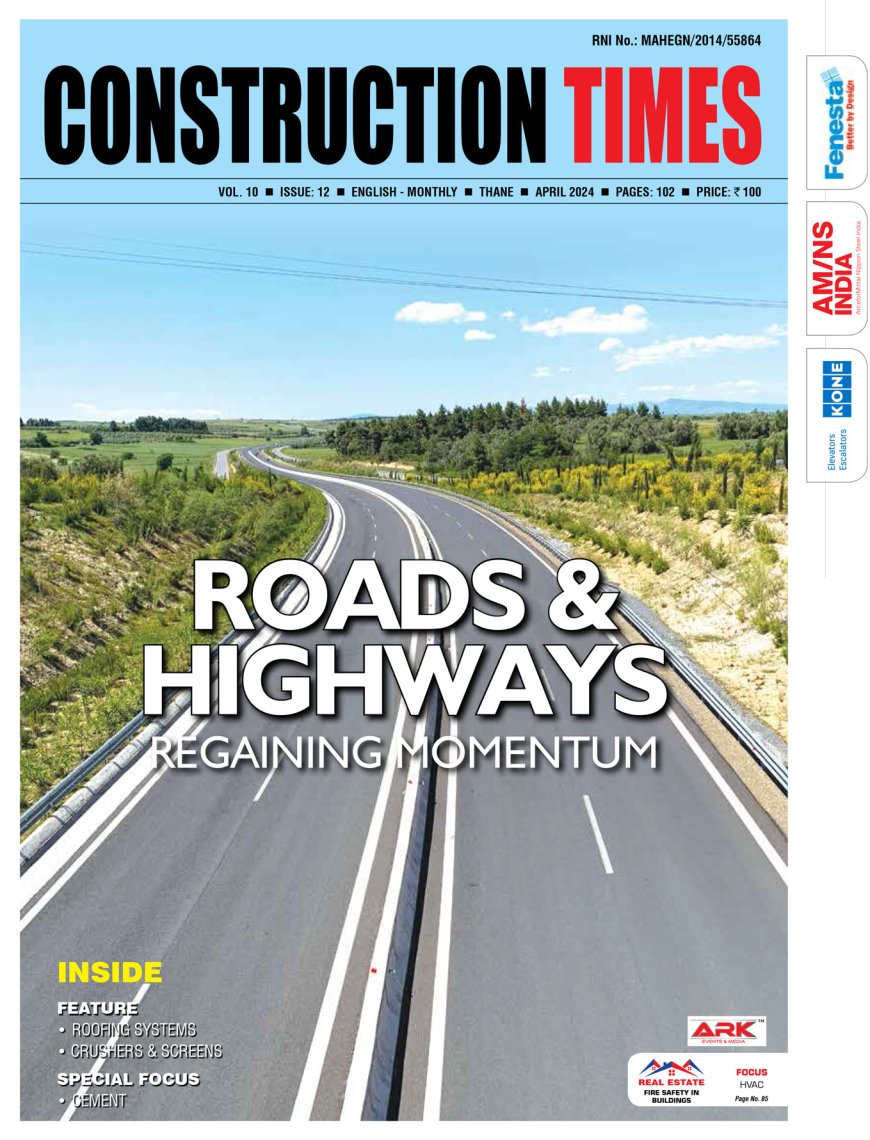Our vision is to create an ultra-scalable, hyper-density data centre ecosystem.
Yotta NM1 is an intelligently designed, ultra-modern building purpose-built to the highest data centre standards and specifications. - Dr. Niranjan Hiranandani, Chairman, Yotta Infrastructure Solutions Being an industry leader is also about being ahead of the curve, and when it comes to diversifying into the segment of data centres, Hiranandani Group


Yotta NM1 is an intelligently designed, ultra-modern building purpose-built to the highest data centre standards and specifications.
- Dr. Niranjan Hiranandani, Chairman, Yotta Infrastructure Solutions
Being an industry leader is also about being ahead of the curve, and when it comes to diversifying into the segment of data centres, Hiranandani Group has timed it to perfection. India's largest Data Center building, Yotta NM1, the largest Tier IV Data Center, certified by Uptime Institute in Asia, and the second largest in the world, was recently virtually inaugurated. Construction Times catches up with its visionary leader,
Dr. Niranjan Hiranandani, MD and Co-founder, Hiranandani Group, who throws light on the huge potential for data centres and what makes Yotta NM1 so unique.
Hiranandani Group is synonymous with high-quality integrated townships. What made you foray into the data centre space?
Being a success in one segment makes the organization hungry to be equally successful in other segments too. As a leading business organization, we have always been monitoring the economy, looking out for future growth opportunities. Some of these, like co-working spaces, to give an example, take a long time period before they show positive response; data centres were on a growth curve even as we began the process of entering the segment; Government policies gave growth and impetus while the Covid-19 pandemic and 'work from home' scenario lead to exponential growth over a very short time frame. So, one can attribute 'right timing' as being one of the factors, but in reality, the data centres were a success story waiting for someone to recognize its potential - and then, follow up with investments. It requires huge capex, and we had the resources to commit to the project - and present day, not only is the data centres segment one of our success stories, we also see it having further growth potential in the near future.
Being a new entrant, almost after two decades the first data centre was set up in India, on what all fronts you have been able to upgrade compared to existing data centres?
I don't think being a 'first mover' is always an advantage - at times, the late entry also has positive factors, like being updated with the latest in terms of specifications and quality control aspects - plus, the all-important aspect of scalability. Let me give an example. Having entered the data centre spaces in 2019, we started off with the game-plan to have maximum automation in operations - once Covid-19 resulted in a lockdown, operations at our first data centre at Panvel, Yotta NM1, were not affected - the team continued to work from remote locations, we had 100 percent uptime. Similarly, if one looks at the exponential growth in demand over the March - June 2020 time frame, we have been able to offer additional capacities and cater to rising demand simply because we started late - had worked in all 'must-have' aspects to attain the standard of 'global best practices', including scalability. So, in effect, we got in at the right time, with updated and latest specifications - making it a win-win scenario.
What makes Yotta NM1 so unique? What are the salient features and core competencies and strengths?
It is India's largest data centre building, the largest Tier IV data centre, certified by Uptime Institute in Asia, and the second-largest in the world.
Yotta NM1 is an intelligently designed, ultra-modern building purpose-built to the highest data centre standards and specifications. State-of-the-art server floors, redundant power and connectivity, multi-tier security, and top-notch facilities make Yotta NM1 amongst the finest data centre buildings in India.
The NM1 data centre occupies one out of five buildings spread over 18 acres, designated as the Panvel data centre park. When all five buildings become operational, the park will be able to offer a total capacity of 30,000 racks and 210 MW power. NM1 offers the 'lowest cost per rack'. Located in the 600-acre Hiranandani Fortune City, it offers 1.4 Design PUE and has 4 Fibre Paths. In terms of tech partners, Yotta NM1 is powered by the 'best in business'. Yotta NM1 works with best-in-class partners around the globe to deliver the highest levels of efficiency, speed, and reliability to customers.
What type of data centre services / managed services do you offer and what are the specialization areas?
Yotta has been planned to be future-ready in terms of its offerings to the industry. This translates into a hyper-density, hyper-scalable data centre, and co-location solutions. It will offer these with supporting managed IT, hybrid multi-cloud, and security services.
What is your take on the regulatory and policy framework supporting the growth of the data centres such as National E-commerce Policy, Personal Data Protection Bill, and proposed policy on Data Centre Parks?
The high potential for growth in data centre spaces in India is the result of policies, be it localization of stored data; initiatives like 'Digital India', and so on. Given this as the basis, the sector will grow exponentially as a result of the policies already implemented as also proposed, such as the personal data protection law. As the present scenario suggests, the policies will open up growth options for all players who adapt to the 'Atmanirbhar Bharat' (self-sufficient India) model. Looking beyond regulations and rules, I would say this is a sector which needs 'pursuit of excellence' as the basis of any plans to enter and grow in the data centre space; the rules and regulatory environment will be conducive to growth, going by what Ravi Shankar Prasad, Minister for Communications, Electronics & Information Technology and Law & Justice, Govt. of India said during the inauguration of Yotta NM1. The potential is huge, and policies are creating an environment that will support growth; the only requirement is to ensure that data centres in India offer global best practices.
How do you assess the move towards the Tier IV category due to the growth in rack power density and critical applications?
This is obvious - The tier 4 data centre, also known as a Level 4 data centre, is considered the most robust and less prone to failures. An enterprise-class data centre tier, it is the most advanced type of data centre tier, where redundancy is applied across the entire data centre computing and non-computing infrastructure. Designed to host mission-critical servers and computer systems.
Brief us on your plans to migrate to renewables and gas-based combined heat and power generation on-site?
This data centre is a global pioneer not just in terms of capability and price but more so in terms of its focus on efficiency and sustainability. Yotta NM1 provides arguably the most efficient power offering available in the market- not just the lowest price of power but also a Power Usage Efficiency or PUE that is a global benchmark for the tropics. That is only phase zero (0). The plan is to migrate to renewables and gas-based combined heat and power generation onsite will give chilled water at the most efficient cost structure possible and will bring Yotta NM1's design PUE numbers down to 1.2 - again unheard of in Indian weather conditions. And, it will not stop there. Facilities are being built to ensure that Yotta NM1 can be 'future-ready' to be 100 percent run on renewables whether offsite, through solar and wind coupled with onsite hydrogen-based co-generation and fuel cells in the future.
What has been the impact of the pandemic on Data Centre segment and also tell us the challenges perceived that may dent the healthy growth of the industry?
Enterprises and governments are now focusing more than ever before on Self-Reliance (Atmanirbhar) in their supply chains within the country, also leading to more emphasis on data privacy/protection and consequently on data localization. The demand for hyper-scale data centres is on the rise, thanks to the government's push for the National E-commerce Policy and proposed policy on Data Centre Parks. Also, with the new normal established due to Covid-19, reliance on technology from enterprises and consumers has increased. All these factors together make for a tremendous growth story for data centres in India. What makes the Yotta story unique is our ownership of all key input resources, massive economies of scale with our land banks, captive green energy generation and distribution capabilities and unmatched expertise and experience in data centre domain including design, engineering, construction and operations.
How do you envision the future growth trends of the industry and of your company? Also brief us on the future plans to build new and more data centres in India?
When it comes to the growth potential, let me begin by defining 'Yotta' - it is the largest decimal unit prefix in the metric system, denoting a factor of 1024. That is how we expect the growth prospects to be - not just for the industry but also for the company. We are looking at Chennai and the National Capital Region (NCR) for the next data centre parks. As a managed data centreservice provider, our vision is to create an ultra-scalable, hyper-density data centre ecosystem ready for the future growth of data. As a part of the Hiranandani Group, Yotta represents a trinity of real estate acumen, data centre expertise, and power generation capability. All brought together to offer scalability, flexibility and quality on large economies of scale, leading to unparalleled savings for our customers.
How do you assess the growth trends of data centres? What are the growth drivers and key verticals that are driving the growth?
India's data centremarket size is estimated to cross $4.5 billion, growing at a CAGR of over 4 percent during 2020-2025. The Indian cloud market is estimated to be $4.5 billion by end-2020. IaaS adoption is likely to grow at a CAGR of 20% between 2020 and 2025. Data localization will increase the physical presence of cloud service providers. State governments are attracting Foreign Direct Investment (FDI) through tax incentives, this will support the strong growth of wholesale colocation. The majority of local data centre service providers offer cloud-based services to end-users in India. Implementation of 5G technology, likely in 2021, should witness the adoption of IoT-enabled product growth in the Indian market. In terms of big data, the Indian government has launched a big data management policy through the Comptroller and Auditor General of India (CAG). The market for big data and IoT has huge potential to be the strongest driver for data centre investments in the Indian market.


Hits: 233












